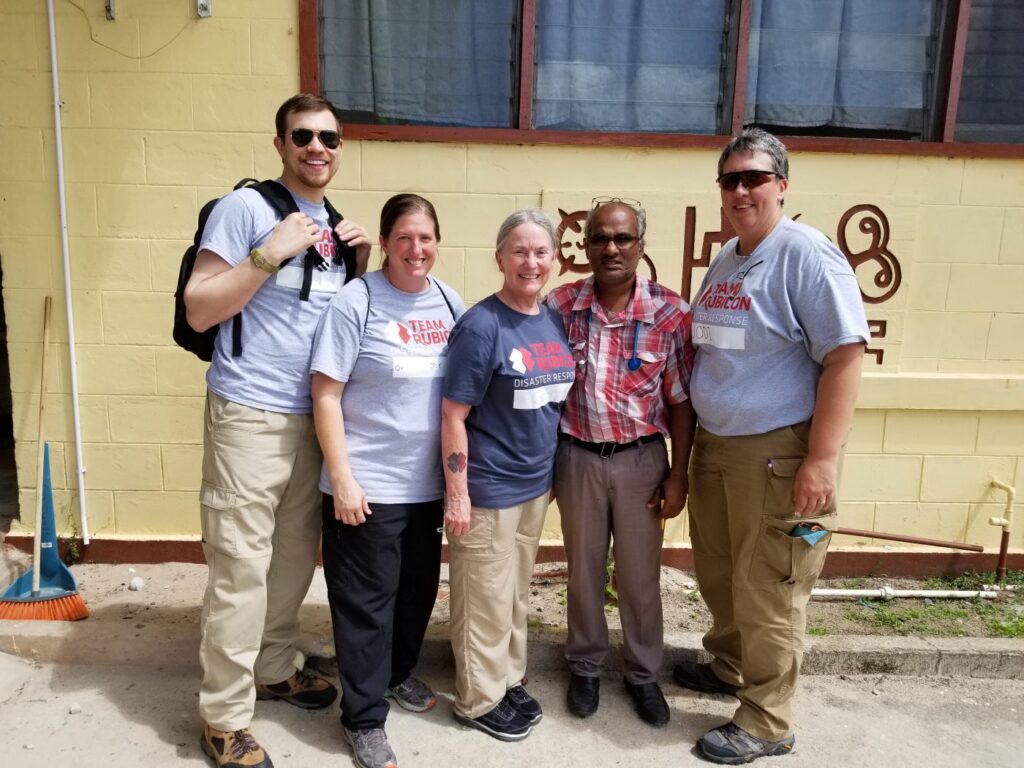I’ve been passionate about teaching EMS providers for more than 20 years, and during that time I’ve had the privilege of teaching all EMS provider levels, from Emergency Medical Responder to Critical Care Paramedics. I’ve watched the proverbial “light bulb” go on when a student finally grasps a tough concept and seen young providers who’ve said they “only want to put out fires, but Chief made me come to EMT class…” mature into fine paramedics and eventually great chiefs. I knew another student who delivered his own child at home and didn’t panic when he noticed the cord was wrapped around his newborn’s neck. “I heard my instructors’ voices in my head telling me to stay calm, you got this,” he said.
In June of 2019, I was honored to be selected to join Team Rubicon’s International Team and deploy to Guyana for a humanitarian medical operation. Our mission during Operation New Horizons was to embed with local healthcare providers, to help where needed, and to provide critical training in Basic Life Support, Automatic External Defibrillator, First Aid, Stop-the-Bleed, and Advanced Cardiac Care. Our team was going to be the first of three waves to deploy to Linden, Guyana, and most of us had no idea what to expect. What equipment would they have available? Would their providers want us working alongside them? Would they be open to “outsiders” training them?

My first assignment was to help train drivers and attendants for St. John’s Ambulance. What an amazing opportunity for a “seasoned” EMS educator, right? Because resources were scarce, we couldn’t follow traditional teaching methods. I’m flexible, but I worried that without the resources we were used to, I wouldn’t be able to complete my mission to deliver high-quality education to these medical professionals. My fears were quickly alleviated when our team sprang into action. We worked together like we’d been a teaching team for years, even though we’d only met each other a few days earlier.
Due to the plethora of questions these EMS providers had, the class ran over its allotted time, but not a single provider left or complained. The providers were clearly eager to learn. Their enthusiasm was contagious and gave us the energy to push through our own fatigue. We were honored and surprised when, at the end of the class, they were so happy that they wanted to take pictures with the Team Rubicon instructors.

Throughout the first week, we learned that several providers had been apprehensive initially about sitting through “boring” lectures with us. But quickly, they were asking their medical director if they could attend our trainings or even stay for more advanced education. That experience is exactly why I’m passionate about medical education. I enjoy challenging the students to want to learn more.
Helping to teach Guyanese medical professionals alongside some of the best Team Rubicon medical volunteers during Operation New Horizons added a whole new highlight to my career.



